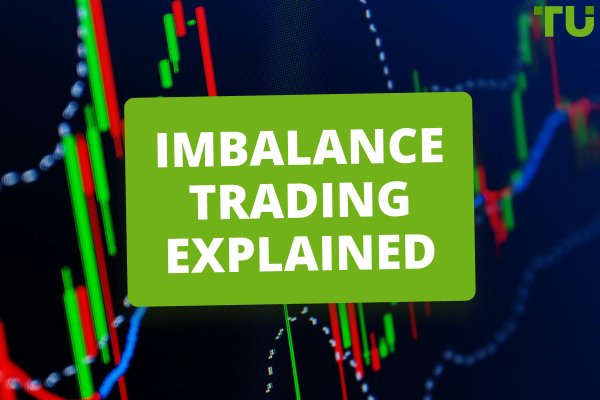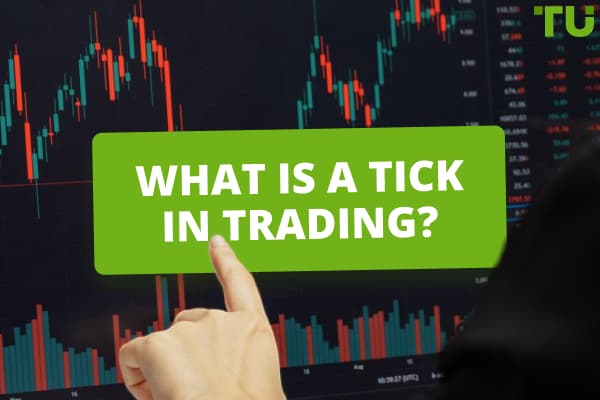The Five Worst Trading Mistakes
So, here they are – the five worst mistakes that traders make:
-
Failing to use stop-loss orders
-
Lack of an exit strategy
-
Average down buying
-
Believing the news
-
Failing to keep a trading journal
Avoid the five worst trading mistakes that traders typically make. Unfortunately, these five mistakes are so commonly made that I doubt there’s a trader anywhere in the world who hasn’t made all – or nearly all – of them at least once. I know that I have (and some I’ve made more than once).
I’m inclined to almost guarantee (not quite, but almost – there’s no such thing as a sure thing in trading) that your profitability as a trader will substantially improve if you can just avoid making these five common trading mistakes. The reason I’ve labeled these the five worst trading mistakes is because making any of them can cost you dearly. It may even result in your account being wiped out if you’re a beginning trader who’s starting out with a relatively small amount of trading capital.
Fortunately, avoiding these potential trading account death traps is fairly easy once you’re aware of them. This article will explain each trading mistake, and also let you know how you can easily avoid making them.
1 Worst trading mistake – failing to use stop-loss orders
Limiting and controlling your risk is absolutely critical to trading success. And one of the simplest ways to manage your risk exposure is by using stop-loss orders. Trading without a stop-loss in place is like sticking your chin out and just daring the market to slap you in the face – and the market will often do exactly that.
There’s simply no good reason not to use stop-loss orders. Placing a stop-loss is easy. Whenever you enter any trade, you should have an idea of a price level that a traded security should not go to if your market analysis is right. Place your initial stop-loss just a bit on the other side of that price line. Once the market moves significantly in your favor, you can then move your stop to lock in some of your open trade profit.
Traders often say they don’t like using stop-loss orders because when they’ve used them in the past, the market just barely stopped them out and then took off in the direction that would’ve made their trade profitable. Yeah, that happens sometimes. But it doesn’t always happen, and the money you avoid losing by trading with stops in place is nearly always a lot more than some profits you might occasionally miss by getting stopped out prematurely.
Best Forex brokers


2 Worst trading mistake – lack of an exit strategy
Entering a trade without some clear idea of where you plan to get out of it is a mistake. Always have a profit target in mind. It’s silly to enter a trade with just the thought, “Well, I think it might go higher from here”. Well, how much higher? – If you only think Gbp/Usd might go up five or ten pips, is entering the trade worth the risk? If that’s the case, then you’re likely trading with a bad risk/reward ratio, risking losing more money than you think you can reasonably make.
Smart traders have mapped out a number of different price action scenarios – and how they will manage a trade – before entering a market. First, they at least have an initial profit target. An initial profit target is a price level where you plan to take profits, either exiting a trade entirely, or perhaps taking partial profits by closing just part of your open trade position. Second, they have ideas on how they might adjust their trade – such as moving their stop-loss order - if the market moves quickly and substantially in their favor, or slowly and only slightly in their favor, or against their position but without stopping them out.
Of course, such potential action plans may be adjusted depending on one’s changing market analysis. Nonetheless, it’s a good idea to at lea
3 Worst trading mistake – average down buying
Average down buying is a long-term trading strategy often recommended by stockbrokers. Average down buying works as follows:
-
You buy some shares of stock at a given price, say, $50.
-
The stock price falls to $45 – you average down by buying additional shares at that price.
-
The price of the stock declines to $40 – you buy more shares.
Assuming you buy the same quantity of shares at each price level, your average purchase price is now $45. The theory behind average down buying is that when the stock moves higher, you will own it at a lower average price, so you’ll make a greater profit than you would have if you’d only made the initial buy at $50.
So, what’s wrong with average down buying? – It totally ignores the fact that you may be, as they say, “throwing good money after bad”. Average down buying assumes that the stock’s price will rise back above $50. Well, there’s no such guarantee. The stock’s price might fall to $10 and never get back above $20 in your lifetime. In that case, your average down buying would only result in sustaining a loss three times bigger than if you’d only done the initial $50 buy.
The best traders whom I know (that is, the most successful and consistently profitable traders) never use average down buying. In fact, part of their trading strategy is the exact opposite of average down buying. They live by the adage, “Never add to a losing position – only add, if at all, to winning positions”.
4 Worst trading mistake – believing the news
Many traders – particularly long-term traders and traders who rely primarily on fundamental analysis – commonly place trades based on one or more key economic reports that governments periodically issue (e.g., GDP reports, inflation measures, employment figures). And sometimes that works perfectly well for them.
However, one of the worst mistakes a trader can make is committing a large part of their trading capital to a trade that’s solely based on such a report. News flash: the governments that issue these key economic reports often lie about (or perhaps are just mistaken about) the figures. With practically every economic major data release that comes out, there’s a revision issued a month or so later that shows substantially different numbers. “Oh, we told you inflation went down last month? – Well, actually, it went up. Oops.”
There’s an old maxim applied not just to trading, but to all of life, that goes something like, “Believe nothing of what you hear and only half of what you see.” Perhaps that statement is a bit extreme. The main cautionary note here is simply don’t overcommit trading capital based on a single fundamental report. Never bet the farm on data that may - or may not - be accurate.
5 Worst trading mistake – failing to keep a trading journal
Unless you rigorously keep a trading journal, it’s unlikely that you will ever learn precisely what you’re doing right and what you’re doing wrong in your trading. Failing to keep a trading journal is unprofessional and lazy.
A trading journal is a comprehensive record of your trades. It should contain all of the following:
-
What market analysis led you to enter the trade.
-
Entry and exit prices.
-
Initial stop-loss and profit target prices (and any subsequent adjustments of those).
-
Profits or losses.
-
Why did you exit the trade.
-
How well your market analysis for entry played out in actual price action.
You may well be surprised by how much a regular review of your trades recorded in a trading journal will teach you. I’ve often related the story of a fellow trader whose review of his trading journal revealed that there was a three-hour window on a specific day of the week when he had never lost money on trades opened and closed during that timeframe. That’s the kind of information that only comes from keeping a good trading journal.
Summary
There’s no avoiding making trading mistakes from time to time. What you don’t want to be doing is making the absolute worst trading mistakes over and over again. Hopefully, by making you aware of the five worst mistakes that traders commonly make, this article will help you avoid doing that.
Just to quickly recap:
-
Never trade without using a stop-loss order
-
Have profit targets and possible price action scenarios clear in your head before entering a trade
-
Don’t do average down buying
-
Don’t take news reports as infallible gospel
-
Keep and regularly review a good trading journal
I firmly believe that your overall trading profitability will substantially improve if you just scrupulously avoid making these five common trading mistakes.
Glossary for novice traders
-
1
Broker
A broker is a legal entity or individual that performs as an intermediary when making trades in the financial markets. Private investors cannot trade without a broker, since only brokers can execute trades on the exchanges.
-
2
Trading
Trading involves the act of buying and selling financial assets like stocks, currencies, or commodities with the intention of profiting from market price fluctuations. Traders employ various strategies, analysis techniques, and risk management practices to make informed decisions and optimize their chances of success in the financial markets.
-
3
Take-Profit
Take-Profit order is a type of trading order that instructs a broker to close a position once the market reaches a specified profit level.
-
4
Forex Trading
Forex trading, short for foreign exchange trading, is the practice of buying and selling currencies in the global foreign exchange market with the aim of profiting from fluctuations in exchange rates. Traders speculate on whether one currency will rise or fall in value relative to another currency and make trading decisions accordingly.
-
5
Index
Index in trading is the measure of the performance of a group of stocks, which can include the assets and securities in it.
Team that worked on the article
Johnathan M. is a U.S.-based writer and investor, a contributor to the Traders Union website. His two primary areas of expertise include finance and investing (specifically, forex and commodity trading) and religion/spirituality/meditation.
His experience includes writing articles for Investopedia.com, being the head writer for the Steve Pomeranz Show, a personal finance radio program on NPR. Johnathan is also an active currency (forex) trader, with over 20 years of investing experience.
Dr. BJ Johnson is a PhD in English Language and an editor with over 15 years of experience. He earned his degree in English Language in the U.S and the UK. In 2020, Dr. Johnson joined the Traders Union team. Since then, he has created over 100 exclusive articles and edited over 300 articles of other authors.
Tobi Opeyemi Amure is an editor and expert writer with over 7 years of experience. In 2023, Tobi joined the Traders Union team as an editor and fact checker, making sure to deliver trustworthy and reliable content. The topics he covers include trading signals, cryptocurrencies, Forex brokers, stock brokers, expert advisors, binary options.
Tobi Opeyemi Amure motto: The journey of a thousand miles begins with a single step.









